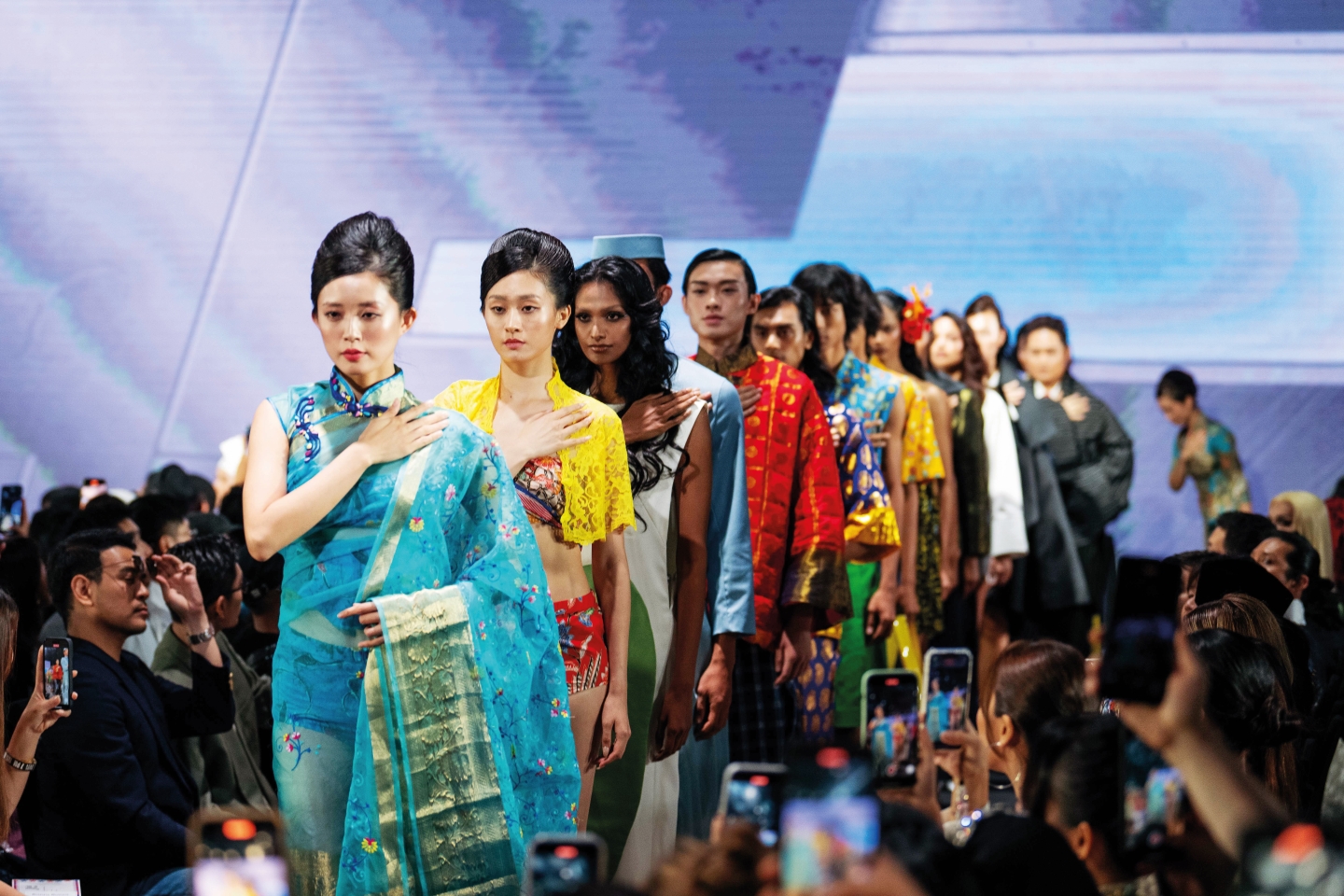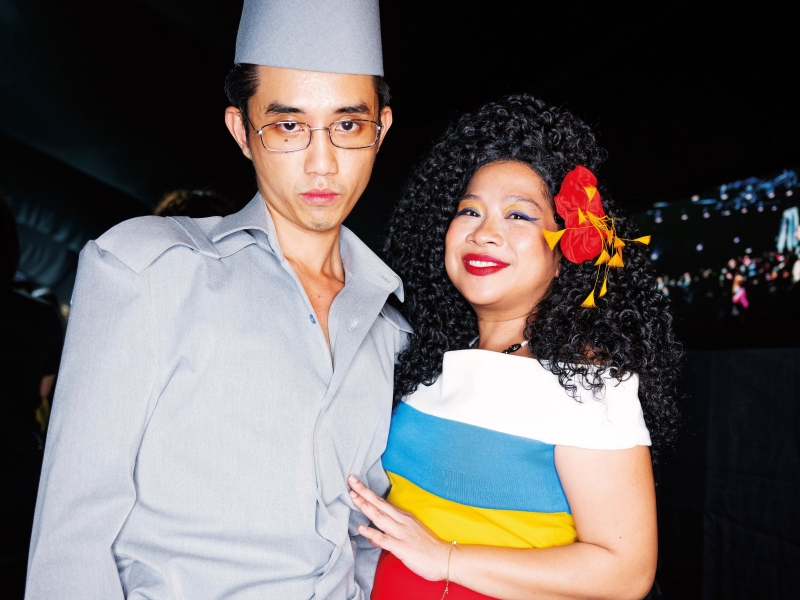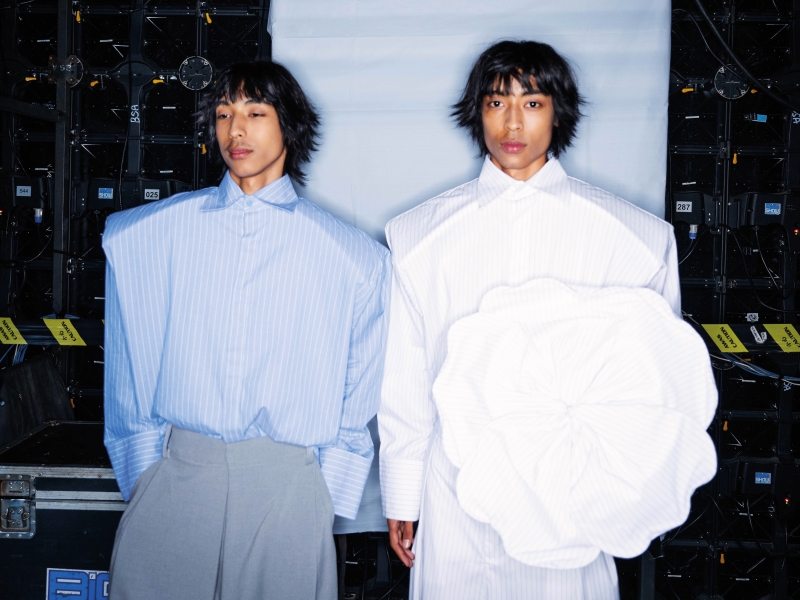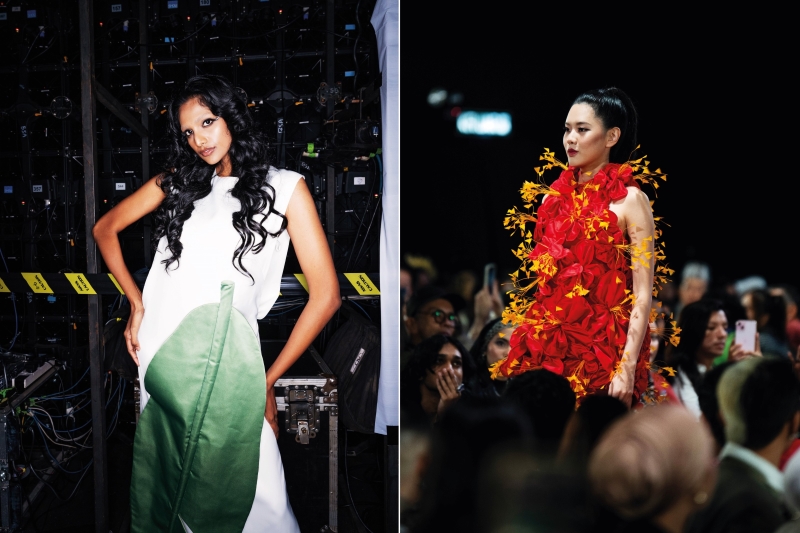
Models taking a final bow at Behati’s Merdeka runway (Photo: Saufi Nadzri/ KLFW)
Among all the landmarks in our bustling capital city, there is perhaps none more quintessentially Kuala Lumpur than the Petronas Twin Towers. And, so, it was no surprise that Kuala Lumpur Fashion Week — the event that celebrates all things homegrown, artisanal and voguish — kicked off at the base of the skyscraping monument.
With a line of tents pitched up along the esplanade outside Suria KLCC mall, right in front of Lake Symphony fountain, the country’s most influential and stylish flocked to the city donning their suavest looks. Yet, while each show drew a crowd, the one thrown by Behati on Aug 3 was definitely among the most memorable.
Designed by creative director Kel Wen, the collection, titled “Merdeka”, embodied Behati’s usual surrealist style. The presentation began with a special broadcast — two reporters appeared on the large LED screen. Sitting behind a virtual news desk, the pair introduced singer-songwriter Zee Avi, clad in a striped figure-hugging dress in the colours of the Malaysian flag, who performed a ukulele rendition of The Essence of Asia (Malaysia Truly Asia).
20240803-dsc_2147photobysaufinadzri.jpg

As the charming acoustic tune concluded, the digital newsroom on the screen transformed into a DJ’s booth, cuing a techno track with bass-heavy beats layered over some of Malaysia’s most recognisable audio snippets from past and present — Tunku Abdul Rahman’s 1957 Proclamation of Independence, the Kuala Lumpur International Airport jingle and the distinct voice heard by thousands every day as part of the MRT’s in-train announcements.
To open, a model in high-waisted trousers and a button-up shirt with exaggerated shoulders strutted onto the catwalk, with a simple black songkok crowning his head and a hibiscus crafted from scarlet fabric in hand. A white-clad twin swiftly followed, showing off a delicate pinstripe pattern upon closer inspection.
The structured, masculine-leaning aesthetics continued in a pair of grey trousers with an ultra wide-leg cut, a shirt dress under a coat with blown-up collar and sleeves and a maxi gown that meshes boardroom-appropriate stripes with songket details. One particular ensemble elicited amplified cheers from the audience: fashion critic Zaihani Mohd Zain, aka Kak Zai, taking to the runway and sporting a pale blue-grey top and pant set complete with Chinese pankou buttons, cocooned under an oversized wrap and with a red tote bag on her arm to match her rouge shoes, lip and cat-eye glasses.
20240803-dsc_2121photobysaufinadzri.jpg

While some of the looks took on a modern, streetwear style — think along the lines of plain button-ups, windbreaker jackets, cropped tops and knee-length shorts — others envisioned traditional wear through a futuristic lens. Qipao in neutral tones with blazers draped nonchalantly on one shoulder were styled with sleek French twists. Samfoo tops and quilted brocade fabric were plentiful, and a buttercup yellow lengha-inspired two-piece set made a stunning statement entrance.
Cheeky references to everyday Malaysian life were scattered throughout the collection. A model in a purple and gold tunic top and pants walked out toting a compartment plate many will know well from either the school canteens of their childhood years or visits to the local mamak. Others appeared to represent key professions that keep our country running — a doctor in an oversized white coat, a military man in khaki green uniform, a construction worker in a neon orange suit with fluorescent yellow safety stripes, and a police officer in head-to-toe navy blue. A billowing black overcoat with white lapels resembled a judge’s gown; a teal batik kebaya with matching stroller bag evoked images of a stewardess passing through the airport; and formal suits brought the corporate professional archetype to the runway.
behati_2024_klfw.jpg

In true Behati fashion, avant-garde designs were in order. First, a model sauntered out in a white column gown with a banana leaf motif splashed down the front. Several looks spotlighted fringe accents created from silken material. A firetruck red qipao with sensational thigh-high slit and tassels that swept the ground earned many oohs and ahhs, recalling images of the ribbons of red fabric tied to temple wishing trees. An all-white gown with a keris attached to the centre of the bodice tied back to Malay tradition and folklore; and a mini frock moulded to look like it was crafted from hibiscus blooms, with 3D anthers that fluttered as the model moved, was a sure crowd favourite.
Fashion, like other art forms, has long served as an outlet for advocacy and progressiveness. So, when flamboyant business personality Datuk Seri Vida [Hasmiza binti Othman] emerged in the closing look — a black, white, green and red kaftan gown, half her face painted to resemble a watermelon as a reference to a certain nation in the Middle East that has been on everyone’s lips of late — the show became more than just an expression of cultural pride, but an example of the Malaysian spirit, courage and desire to speak out for others in times of hardship.
For the final bow, the models re-emerged in single file. Once in place, they raised their right hand and placed it over their chest, referencing the house’s name, its vision for a diverse and unified country and an overarching piece of advice for all Malaysians — Behati. Take heart.
This article first appeared on Aug 12, 2024 in The Edge Malaysia.


